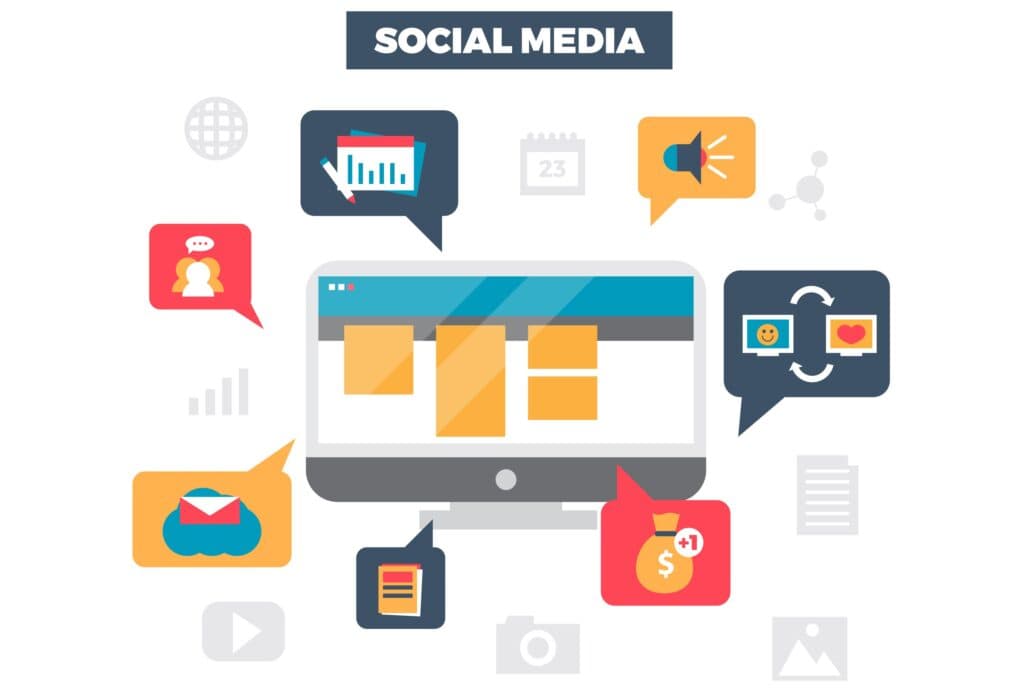Managing your social media presence today can feel like a full-time sprint. From brainstorming content and designing visuals to engaging with audiences, marketers juggle endless moving parts. There are times when we scramble to post in real-time — and that’s why social media scheduling tools are no longer optional. They’re essential for small businesses, creators, and marketing teams to stay consistent and creative without burning out.
For years, Buffer has been a go-to social media management tool, lending a hand to many marketers and creators. But here’s the thing: it’s not the only option and it’s not always the best fit for every team. In fact, exploring other Buffer alternatives can provide smarter workflows, deeper insights, and AI-powered automation that Buffer may lack.Especially when you consider your scale, what you want to achieve, and other contributing factors.
That’s where this guide comes in. We’re exploring 10 powerful Buffer alternatives that bring fresh features, deeper insights, and better workflows to the table, including the new marketing tool, Polareis, a new social media management platform taking post scheduling and AI-powered automation to the next level.
What Is Social Media Scheduling & Automation (and Why It Matters)?
At its core, social media scheduling is basically planning and publishing your posts across multiple platforms without needing to stay glued to your phone 24/7. It means not having to stay awake until midnight to post holiday greetings. In short, social media automation helps you stay on track with your posts across platforms, ensuring consistency and freeing up time.
With automation, you can:
- Stay consistent without posting manually. Content on multiple platforms can be posted at the same time.
- Reach audiences at the best times. Even when you’re offline, you can schedule your posts to reach the right audience.
- Measure performance with clarity. This will help you know what’s working and what’s not.
The right tool isn’t just about scheduling posts. It should also help you align your content with your strategy; otherwise, you’re just posting into the void with no return. That’s why considering Buffer alternatives can be a game-changer.

Why Look Beyond Buffer?
While Buffer is a great marketing tool due to its simplicity, basic scheduling features, and affordability, it might be time to explore other platforms that can do more for your business. As much as we appreciate what Buffer offers, it does come with limitations, especially now that newer social media management tools are catching up with smarter features and fresh capabilities.
Buffer’s limitations include:
- Limited analytics compared to newer tools
- Less focus on integrated content workflows
- Not as robust for larger teams or multi-channel strategies
Modern social media management platforms demands more, such as deeper insights, smarter automation, and seamless collaboration. We’re talking about content in different formats, ongoing campaigns, and audiences who expect brands to show up consistently with engaging, eye-catching posts. All of this points to one thing: businesses today need something more powerful than Buffer alone.
Criteria for Choosing the Best Buffer Alternatives
Before we dive into the list, it’s worth looking at what really matters when choosing the right marketing tool for your business. The last thing you want is to spend money on a platform only to use a fraction of its features. Before committing, make sure the tool you choose actually supports every stage of your strategy, so you’re getting the most out of it, not just part of it.
What to look for:
- Ease of use
- Content calendar and smart post scheduling features
- Automation and AI assistant
- Depth of analytics
- Team collaboration tools
- Pricing that scales with your business growth
The 10 Best Buffer Alternatives in 2025
Each of these marketing tools has its own strengths, so consider your workflow and choose what feels right for you.
- Polareis
- Best for: Content-driven marketers who want one platform for strategy and execution.
- Strength: Unified content calendar, automated distribution, funnel-focused analytics, team collaboration.
- Why: Goes beyond “post scheduling” by connecting social media presence to the broader marketing funnel. It helps you see which formats drive the most action and gives you the insights you need to make smarter decisions for your overall funnel strategy.
- Hootsuite
- Best for: Large marketing teams managing multiple accounts.
- Strength: Advanced monitoring and reporting.
- Why: Offers broader features, but can feel overwhelming for smaller teams.
- Later
- Best for: Visual-first brands on Instagram & TikTok.
- Strength: Drag-and-drop visual planning.
- Why: Better for creatives aesthetics, but limited for B2B content distribution.
- Sprout Social
- Best for: Teams needing in-depth analytics and CRM-style features.
- Strength: Social listening + robust reporting.
- Why: Provides rich insights but comes at a higher cost.
- CoSchedule
- Best for: Content teams aligning blogs, campaigns, and social media.
- Strength: Unified Marketing calendar + headline analyser.
- Why: Great for marketers who want content and social media in one place.
- Sendible
- Best for: Agencies managing client accounts.
- Strength: Client dashboards, white-label options for reports and dashboards, allowing agencies to brand them with their own logo and colours.
- Why: Built for agencies, though less intuitive for solo creators.
- Zoho Social
- Best for: Businesses already using the Zoho ecosystem.
- Strength: Integrates with Zoho CRM.
- Why: Offers a seamless workflow if you’re already using Zoho’s suite.
- Agorapulse
- Best for: Teams needing collaboration, social listening & reporting.
- Strength: Unified inbox, competitor analysis.
- Why: A stronger team tool compared to Buffer’s lighter setup.
- MeetEdgar
- Best for: Automating evergreen content.
- Strength: Content recycling + AI suggestions.
- Why: Saves time for solo entrepreneurs.
- Crowdfire
- Best for: Smaller businesses needing affordable scheduling.
- Strength: Simple and budget-friendly.
- Why: An easier starter tool than Buffer, though less powerful.
How to Decide Which Tool Fits Your Brand
Before choosing the perfect tool for your business, here’s a quick guide and some simple questions to consider:
- Are you a solo creator or part of a team?
- Do you need in-depth analytics or just straightforward scheduling?
- Is budget your primary concern, or do you prefer something that scales with your needs?
Pro tip: Map your needs to your funnel stages. For example, if you’re in awareness mode, a visual tool like Later might suffice. If you’re focused on conversion and tracking, something like Polareis will be more effective.
Why Polareis Stands Out Among Buffer Alternatives
Here’s the deal: most scheduling tools stop at publishing. Polareis doesn’t.
It was designed to connect your content calendar and performance analytics in one place. This means you can not only plan your posts, but also see how they’re performing and contributing to your marketing funnel.
- Unified content calendar (blogs, social media, in one place)
- Funnel-focused insights (see which posts actually drive performance)
- Smart automation for distribution and repurposing
If you’re tired of juggling five different tools to manage content and social media, Polareis is worth considering. It is the perfect marketing tool for marketers who want smarter, integrated workflows.
Final Thoughts
At the end of the day, the ‘best’ Buffer alternatives isn’t about having the most features. It’s about finding a tool that fits how you work.
Your scheduling tool should save you time, reduce stress, and make your strategy more effective, not just be another app to manage.
And if you want something that goes beyond scheduling and actually ties your social efforts to bigger marketing results? Polareis is a smart choice. Marketers who want to move fast, stay consistent, and make their content count built it.
Frequently Asked Questions (FAQs)
Q: Is Buffer still worth using in 2025?
A: Yes, if you want something simple and budget-friendly. However, if you’re looking for a more modern platform designed for today’s multi-channel marketing, Polareis is worth keeping an eye on.
Q: What’s the best Buffer alternatives?
A: It depends on what you need. If you’re after something simple and visual, Later is a great choice. For teams that want solid analytics without breaking the bank, Zoho Social is a strong option. And if you’re looking for an all-in-one platform, Polareis stands out as the right option for you.
Q: Which tool is best for agencies?
A: Definitely Polareis. They build it with agencies in mind, offering collaboration features, workflow tools, and multi-brand management to make handling client accounts much smoother.
Q: Which tool is best for creators?
A: Polareis is a strong choice if you’re creating blogs, long-form posts, or multi-platform content. The design focuses not just on scheduling, but also on ideation, publishing, and repurposing content across different channels.
Q: Can I manage multiple brands with these tools?
A: Yes, several of these tools support multi-brand or multi-client management. Hootsuite, Sprout Social, Zoho Social, Agorapulse, and Polareis all make it easy to manage multiple brands from one dashboard. Polareis supports multi-brand management, allowing you to switch between projects without paying extra for every account, which makes it especially useful for agencies and freelancers who handle multiple clients.




